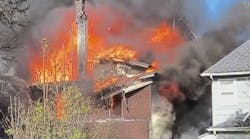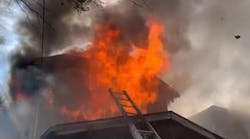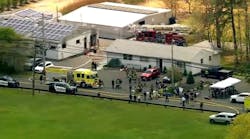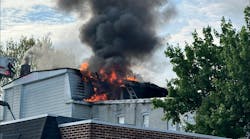For the past 41 years, I have worked in every position from firefighter all the way to fire chief and all the positions in between, such as paramedic, fire service instructor, fire and life-safety educator, fire investigator, fire inspector and fire marshal. For 28 of those years, I have been the designated public information officer (PIO) for the department in which I was a member. It has been a rewarding experience to me, more exciting than actually fighting the fire.
One reason being PIO is so rewarding is that the event lasts much longer than for the rest of the department. Usually, the PIO is notified when an alarm is received and responds. Once on scene, the PIO is part of the incident command staff and works with the media. After the incident has ended, the PIO receives all the inquiries concerning the incident. Long after all the hose has been rolled up and put back on the rigs that are now in quarters, the PIO is usually still working the incident by answering the many calls from the media and public for information. That can last for days, weeks, sometimes even months.
My career as a PIO started in 1983, when I was assigned the position by my department’s new fire chief. At the time, there were only a few full-time fire department PIOs in the country. I contacted them and they filled me in on what to do and what not to do and provided me with the information I needed to help me get started. Today, many departments have designated PIOs and there are a number of classes, online courses and seminars available about media relations and public information.
One question I am often asked: “Is it really necessary to have a designated PIO on our department?” The answer is most definitely yes. It doesn’t matter whether you are a volunteer, combination or full-time career agency; every department needs a designated PIO.
Here are seven important reasons why I believe every fire department should have a designated PIO:
1. Makes emergency notifications. The PIO’s most important function is to provide emergency information to the public during an incident, emergency or disaster. The PIO is a member of the command staff of the incident command system. The PIO stands next to the incident commander, obtaining information to disseminate as needed. If the situation calls for releasing life-saving information for an evacuation or shelter in place, it must be done immediately. The trained PIO will already know who contacts are in the media and how to make notifications to the public through the emergency-alert system, by working directly with the media or using social media.
2. Promotes department’s activities. The fire department is one of the most important organizations in any community. Many times, the department will need the support of the community. Keeping the community in touch with your department makes it easier to get that support when you need it.
3. Recruits new members. Whether volunteer or career, the fire service is always looking for new personnel. The PIO can provide the community with information on recruitment and hiring qualifications.
4. Provides information to the media. Many times during an incident, the media will be present. Someone must be available to handle media inquiries in a professional manner, ensure that media presence does not interfere with operations and to keep the media representatives safe.
5. Provides information to the public. Many people get hung up on the idea that PIOs are needed only to handle the media, but they are only one piece of the pie. There are many others that want information about the department or incidents, including the public, insurance companies, civic organizations, students and other government agencies, to name a few.
6. Provides information to your members. The members of your department should not learn what is going on in the department by watching TV or reading outside news sources; they should be advised directly by the department PIO. This can be done a number of ways, such as through email, social media or a newsletter.
7. Educates the public. Whether it is fire and life-safety information, disaster preparedness or how to become a firefighter, the PIO can employ the media, give talks at schools or civic groups or use social media to get the word out.
There are many other duties PIOs can perform for their departments. In future columns, I will cover such areas as qualifications for a PIO, how to prepare media releases, how to handle interviews, operating at emergency incidents and using social media for your department.






